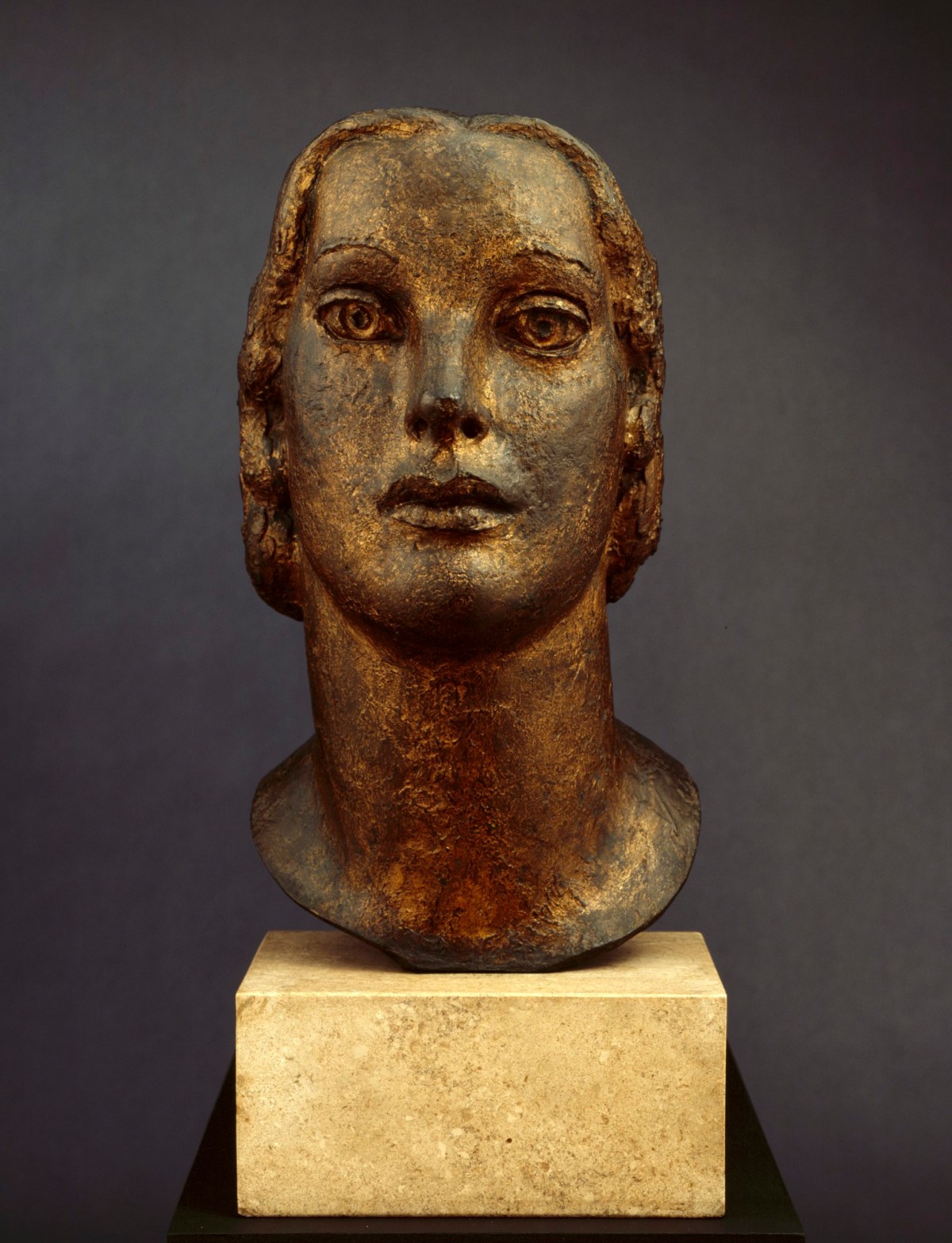
Frank Dobson RA, Study for the Head of Pax, 1933.
500 mm x 235 mm x 275 mm. © The Artist's Estate. © Photo: Royal Academy of Arts, London. Photographer: Paul Highnam.
This image is not available to download. To licence this image for commercial purposes, contact our Picture Library at picturelibrary@royalacademy.org.uk
Study for the Head of Pax, 1933
Frank Dobson RA (1886 - 1963)
RA Collection: Art
This is the first study for the head of Dobson’s Pax, a large sculpture of a reclining female figure in Portland stone from 1935, one of the sculptor’s most important works (private collection). Pax is the Roman goddess of peace.
The exaggerated features of the stylised female head may have been inspired by African sculptures and the works of Picasso. The rounded forms of Pax recall Maillol and Picasso’s Classical period. Dobson was also inspired by the Impressionists, Rambrandt and Cezanne. Its mottled surface was produced by layering a dull, brown patina over shiny bronze.
Dobson concurrently made realistic bronze figurative busts (often for commissions) and more stylised carved figures. Being a study for a stone sculpture, Study for the Head of Pax is more stylised than many of Dobson’s bronze busts as it has exaggerated features. Dobson began to focus on the female nude from the mid-1920s, which David Fraser Jenkins argued was motivated by his second wife, Mary Bussell, an artist model he married in 1926 and coincided “with his admiration for the classical Picassos of the 1920s seen in Paris” (Fraser Jenkins 2003, p.80). Neville Jason also explains Dobson’s use of the female figure: “Early on in his career as a sculptor Dobson settled on the subject to which he would remain faithful. For him the female figure was the theme on which he seemed able to play endless inventive variations. She is the icon who embodies all the gentle virtues; peace, love, harmony, fruitfulness and content” (Jason, 1994, p.80).
Dobson had an accident whilst making Pax which meant he couldn’t lift his arm above shoulder level. His assistant Lionel Leslie recounted how he completed the work: “The first time I visited his studio in Manresa Road he was suffering from a badly fractured left arm, which prevented him from raising it for a year or two. But nothing daunted, he hitched it to the ceiling by a sort of pulley so that he could complete the huge three-ton figure, Pax” (Jason, 1994, p.83).
Dobson is often compared unfavourably to his contemporaries and Pax was no exception. A review in the Independent in 1994 writes “one has merely to compare his Pax, carved in 1934, which might have been impressive a decade earlier, with Barbara Hepworth’s two versions of Mother and Child of the same year … to perceive an artist progressively out of taste with his own time” (Ian Gale 1994, p.23).
Although the Burlington magazine wrote there are three studies for Pax in 1981, there are only two listed in the catalogue raisonné of Dobson’s work published in 1994 (Thompson-Pharoah, pp.140-141 and Burlington 1981, p.128). The second study, which is a small terracotta version, is in the collection of the City Museum and Art Gallery, Portsmouth.
Further Reading
David Fraser Jenkins, ‘Frank Dobson’ in Penelope Curtis (ed.), Sculpture in 20th-century Britain Volume II: A Guide to Sculptors in the Leeds Collection, Leeds: The Henry Moore Institute, 2003, pp.88-81.
Neville Jason and Lisa Thompson-Pharoah, The Sculpture of Frank Dobson, Much Hadham: The Henry Moore Foundation/Lund Humphries, 1994.
Object details
500 mm x 235 mm x 275 mm
Start exploring the RA Collection
- Explore art works, paint-smeared palettes, scribbled letters and more...
- Artists and architects have run the RA for 250 years.
Our Collection is a record of them.



